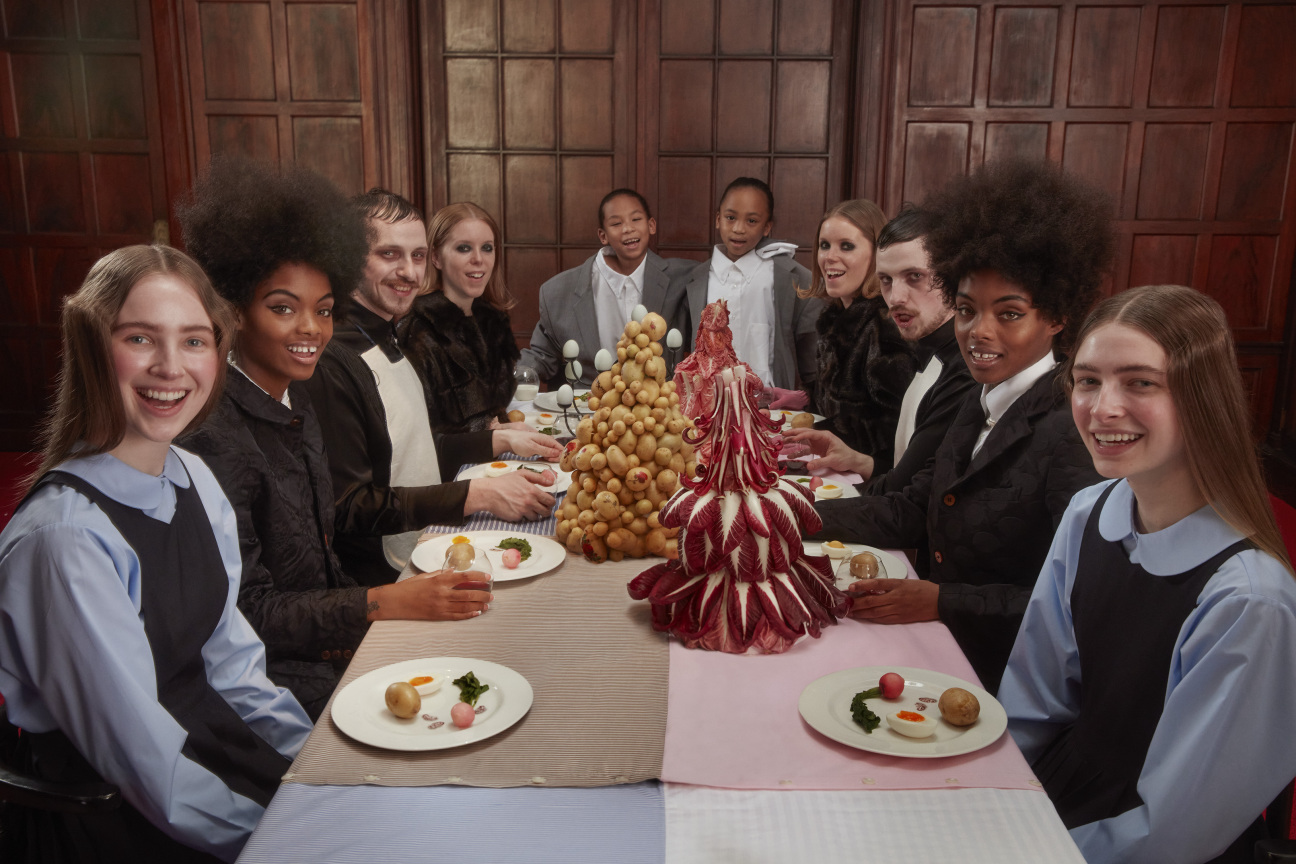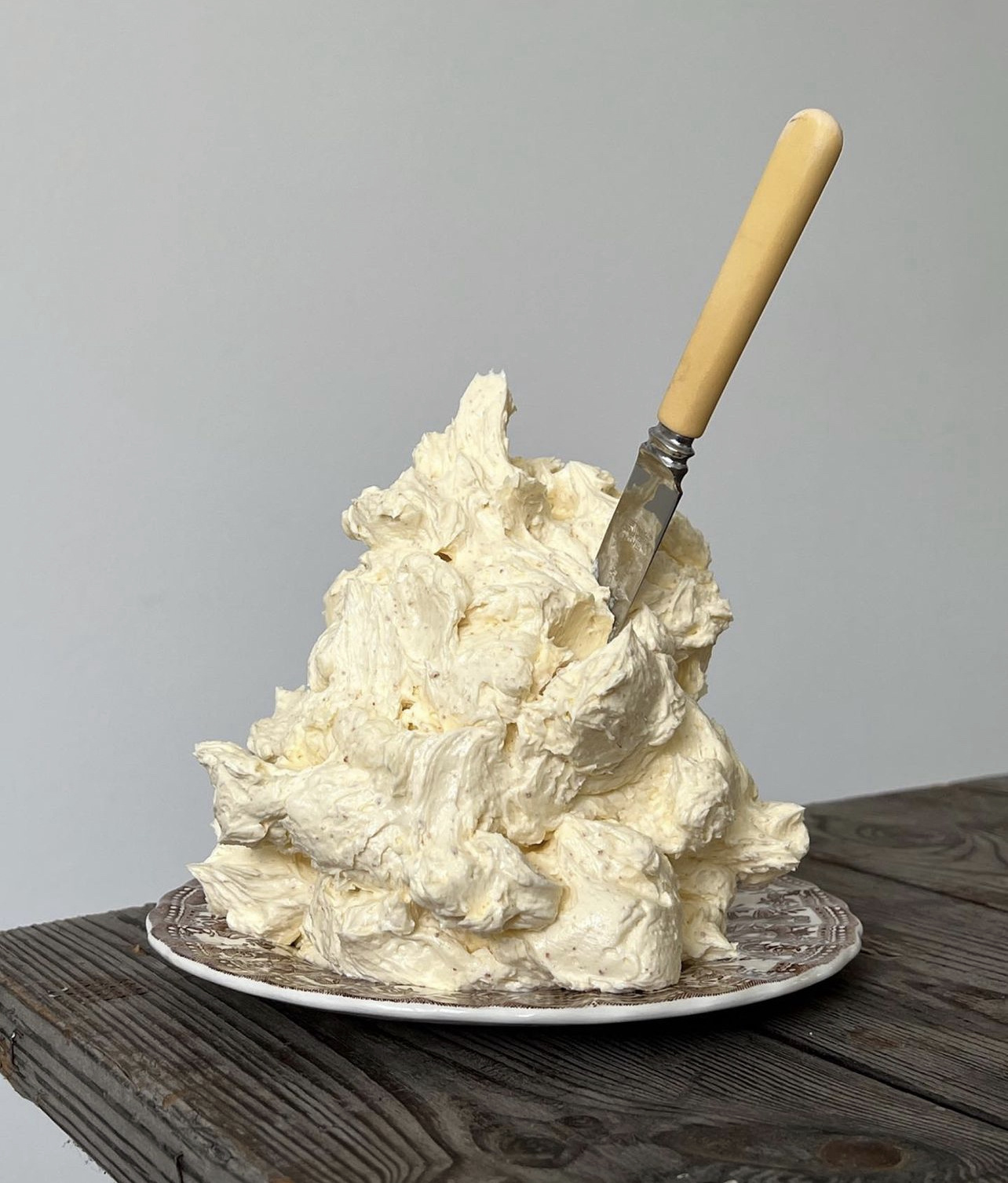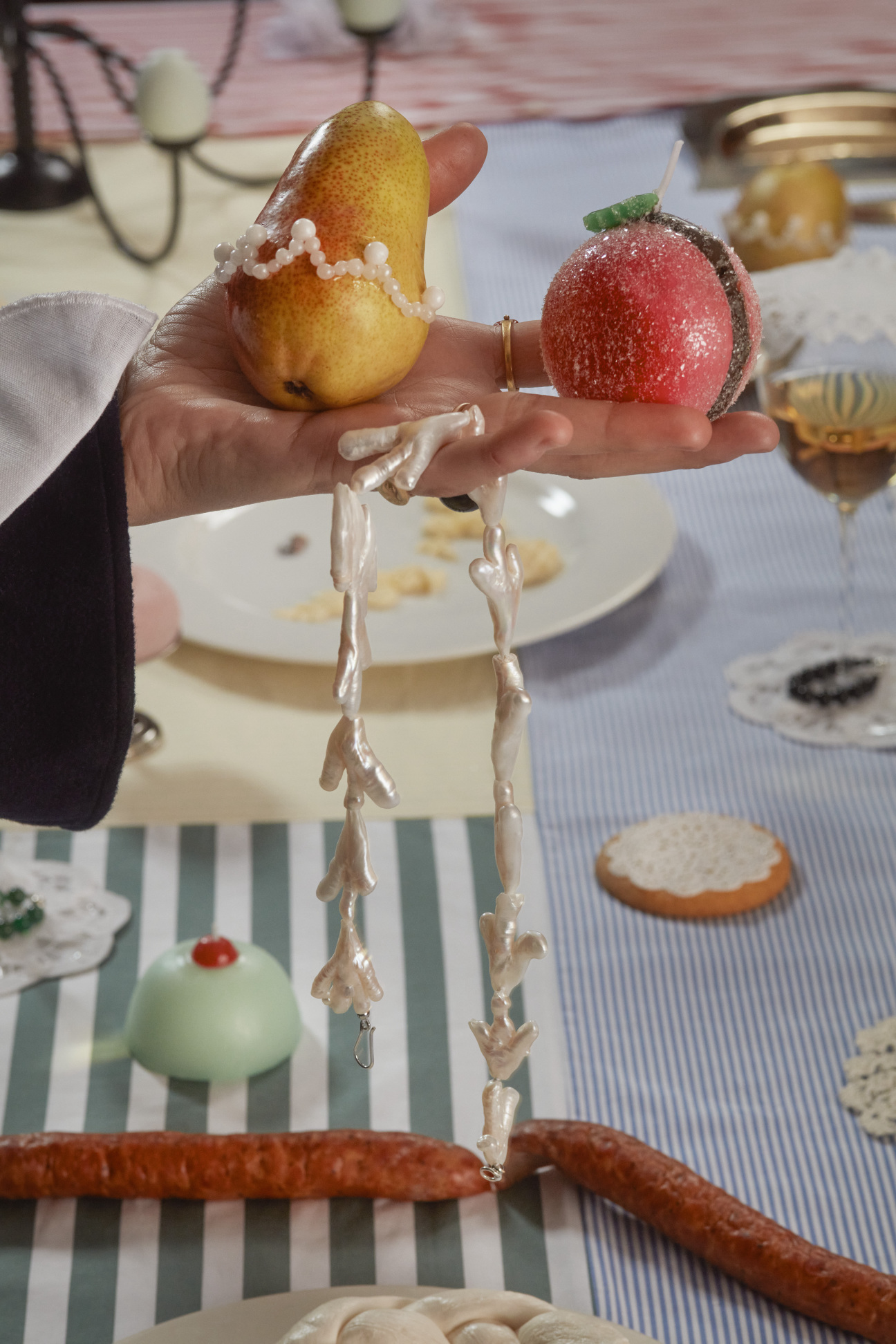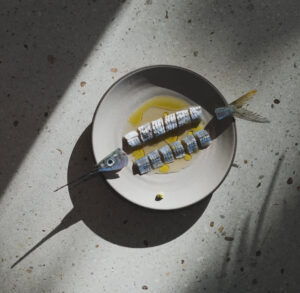
First, they came for the food—playful little touches like bows and pearls decorating cakes and baguettes. Then, they came for the tables—decadent, whimsical installations that transform the dining experience into performance art. These days, it’s rare to attend a gallery dinner or fashion fête that is devoid of these touches—say, lavishly latticed pastry crusts or butter carved into the shape of a swan. Whether it's tablecloths with running plackets reminiscent of a button-down shirt, or chandeliers made of cake, nothing is as it seems.
The “they” behind these rococo details are a group of prominent food stylists and designers, best embodied by figures like Laila Gohar, Charlotte Forsyth, and Lina Sun Park, who—through inventive food installations, the revival of old-world recipes, and an alluring mix of humble yet extravagant dinner parties—are calling for the objectification of food, forcing us to slow down and reexamine what it means to dine.

Gohar, in particular, is at the forefront of this comestible wave. Over the years, the Cairo-born, New York-based designer has earned a reputation for presenting outlandish creations at the parties she caters for art and fashion clients: from the giant trompe-l'oeil cake installation she dreamed up for the Luxury Collection in Paris, to the achingly delicate egg candelabras and poached pears she devised for Proenza Schouler. Whether her presentations are actually appetizing—or whether guests will leave hungry, for that matter—is beside the point. Dining is evolving into an increasingly abstract concept that prioritizes sculptural and aesthetic delight over physical satisfaction.
Predictably, the trend took hold in the depths of the pandemic. As home became the new center of the universe and occasions to gather became few and far between, a more mindful approach to food coincided with an appreciation for the handmade and the urge to redefine daily spaces and rituals. For Emma Ranne, who runs the dinner party series SUPPER CLUB in Helsinki, the rise in over-the-top, whimsical culinary displays is the direct result of the isolation of those times. “Before Covid, long-table dinners hosted by brands weren't really a thing. Now, they're popping up everywhere. Food is treated more like art,” she says. Forsyth, a food stylist based in London who co-founded her culinary operation HANDS with friend Sofie Thompson during lockdown, attests to this as well. “When gathering with others was impossible, food was our savior,” she says. “We became fascinated with the table as a place we could control and make beautiful—[where we could] spend more time."

In the years since, these tablescapes have morphed into an art form that dances between absurdism and delicate femininity. “These days, we live such busy lives; you have to make time to gather together, to make that moment extra special,” says Ranne. “By slowing down, you find new ways to play around with food.” Forsyth agrees, noting the meditative aspects of lockdown cooking such as “connecting with food on a deeper level and realizing the beauty in spending hours in the kitchen.”
Like other trends that mine girlhood for its coquettish, idiosyncratic inspirations, fantasy tablescapes and food design can be easily dismissed as child’s play. But those are the very qualities that this cadre of artists and stylists are solving for. For a brand event in Brussels, Ranne devised a “checkerboard” appetizer made from tomato jellies and cheese cubes, inspired by the bistro’s napkins. “It was fun to come up with the idea, and then experiment with how to make it a reality,” she says.

Gohar's line of tableware, Gohar World, bills itself somewhat inexplicably as a surrealist "dream place” where “adults wear lace bibs, cauliflowers are candles, and every plate comes with beans." Indeed, the brand markets lace bonnets for fruits, doilies strung with seed pearls, candy-shaped cutlery rests, and beaded stemware “bracelets.” Necessity is out the window. Through a line of inherently frivolous accessories, the brand calls for rituals—and an air of romance around them.
At the end of the day, what these bibelots afford their devotees is a sense of transcendence, if only for the night. “All of these ideas create a fantasy world to get lost in,” Forsyth reasons. With the proper accoutrements, “the table is a magical place where nothing else exists.”










 in your life?
in your life?

